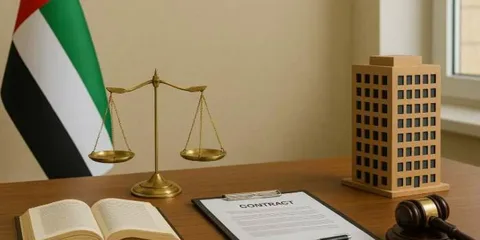In New York City, infrastructure development goes far beyond building structures — it extends to creating safe, accessible, and well-designed public spaces. One critical aspect of this process involves Sidewalk, Street, and Curb BPP (Builders Pavement Plan). This essential requirement ensures that sidewalks, curbs, and roadways adjoining new buildings are properly designed, reconstructed, and compliant with city regulations.
Whether for a residential project, commercial building, or major redevelopment, a properly executed BPP guarantees that the public right-of-way meets safety standards, supports accessibility, and aligns with the Department of Transportation (DOT) and Department of Buildings (DOB) guidelines.
Understanding the Builders Pavement Plan (BPP)
The Builders Pavement Plan is a technical drawing or engineering plan that outlines how the sidewalk, curb, and roadway in front of or around a construction site will be designed, repaired, or replaced.
A BPP is not just a design document — it’s a regulatory requirement that must be approved before a building can receive its Certificate of Occupancy (CO). Without it, property owners cannot legally occupy or sell the new structure.
The plan includes detailed specifications for:
-
Sidewalk layout and materials
-
Curbs, driveways, and pedestrian ramps
-
Tree pits and planting areas
-
Street restoration and grading
-
Stormwater drainage considerations
-
Compliance with ADA (Americans with Disabilities Act) standards
Why the BPP Is Important
The purpose of the BPP is to ensure that public areas surrounding private developments are safe, uniform, and functional. Properly executed sidewalks and curbs help maintain pedestrian safety, accessibility, and drainage efficiency.
Key benefits include:
-
Improved Public Safety – Smooth, even sidewalks prevent trip hazards and make it safer for pedestrians.
-
Better Drainage – Proper grading and curb alignment prevent water pooling and flooding.
-
Enhanced Curb Appeal – Professionally constructed sidewalks and streets improve the aesthetic quality of the property and the surrounding neighborhood.
-
Legal Compliance – Meeting DOT and DOB standards helps avoid costly delays or violations.
-
Increased Property Value – Well-maintained public areas around a property can positively affect its market value.
The BPP Approval Process
The process of obtaining approval for a Builders Pavement Plan involves several key steps:
-
Survey and Site Assessment
A licensed professional engineer or registered architect surveys the property’s frontage to identify existing conditions, elevations, and infrastructure elements like curbs, trees, and drainage systems. -
Plan Preparation
Based on DOT design standards, the professional prepares detailed drawings showing proposed sidewalk widths, curb alignments, driveways, and any required modifications. -
Submission to DOT
The BPP is submitted to the New York City Department of Transportation for review and approval. -
Corrections and Revisions
If the DOT identifies discrepancies, revisions must be made to bring the plan into compliance with design standards. -
Approval and Construction
Once approved, the contractor can proceed with sidewalk and curb construction in accordance with the plan. -
Final Inspection and Sign-Off
After construction, the DOT inspects the work to ensure it matches the approved plan. Only after a successful inspection can the project move toward final DOB sign-off and occupancy approval.
Common Elements of a Sidewalk, Street, and Curb BPP
A typical BPP includes several essential features:
-
Concrete Sidewalks: Must meet NYC DOT thickness and material specifications.
-
Curbs: Properly graded to direct water to catch basins and prevent pooling.
-
Pedestrian Ramps: Installed at corners to meet ADA accessibility standards.
-
Driveway Cuts: Designed for vehicle access without disrupting pedestrian flow.
-
Street Restoration: Any damaged road sections must be repaired or resurfaced.
-
Tree Pits and Green Areas: Incorporated where applicable to support city greening initiatives.
Responsibilities of Property Owners and Contractors
Property owners are legally responsible for ensuring that the sidewalks and curbs adjoining their property are properly maintained and compliant. During construction, they must:
-
Hire a licensed engineer or architect to prepare and file the BPP.
-
Ensure the contractor follows the approved design.
-
Repair or replace any damaged public pavement adjacent to their lot.
-
Obtain final DOT and DOB sign-offs before project completion.
Failing to comply with these requirements can lead to penalties, delays in obtaining a Certificate of Occupancy, or mandatory reconstruction of non-compliant areas.
Challenges in the BPP Process
While the BPP system is straightforward in theory, it can become complex in practice due to:
-
Conflicts with existing underground utilities.
-
Design adjustments required for ADA compliance.
-
Coordination between multiple city agencies.
-
Limited construction space in high-traffic urban areas.
To overcome these challenges, property owners often rely on experienced civil engineers and expediters who understand the technical and procedural requirements of both DOT and DOB approvals.
Final Inspection and DOB Sign-Off
After construction, the DOT conducts a final inspection to ensure that the sidewalk, curb, and roadway meet the approved BPP standards. Once the work passes inspection, the DOT issues a sign-off, which is required for the DOB to grant a final building sign-off or Certificate of Occupancy.
This sign-off process verifies that the property owner has fulfilled their responsibility to restore and maintain the public right-of-way.
A Sidewalk, Street, and Curb BPP is more than a technical requirement — it’s a commitment to safety, accessibility, and community enhancement. By ensuring that every new construction project contributes to the improvement of public infrastructure, the Builders Pavement Plan plays a vital role in maintaining New York City’s urban integrity.
From design to inspection, each stage of the BPP process reflects the city’s dedication to ensuring that growth and safety go hand in hand — one sidewalk, one street, and one curb at a time.


